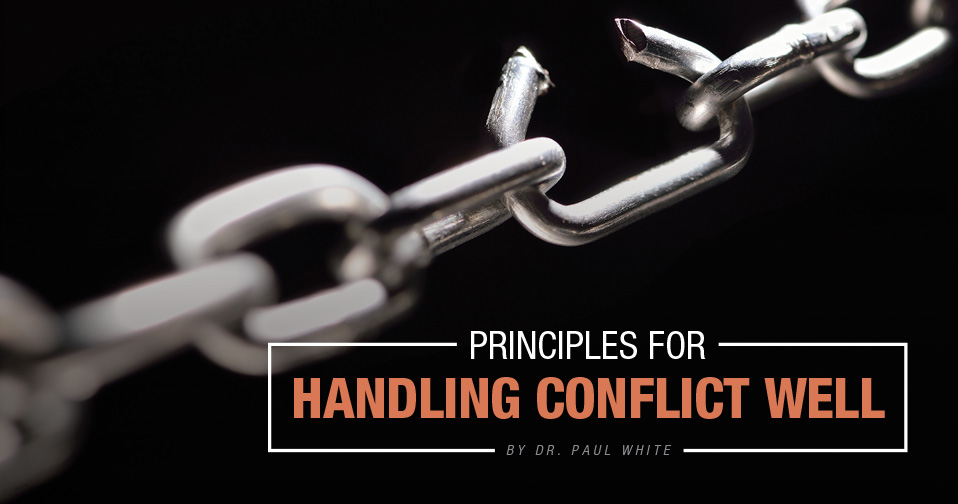Conversations That Can Convert

As I have worked with Christian coaches, counselors and solopreneurs, I have found that the idea of selling is very unappealing to them. Most people think of sales as manipulative, pushy, and even unethical! This paradigm comes from being on the receiving end of aggressive selling techniques used to make someone buy something they didn’t really need. The problem is that coaches, counselors and solopreneurs have to sell to build a business, and we are all selling something. So, how do we sell in such a way to avoid being pushy, manipulative and unethical yet still produce results? I have developed an approach which has taken the negativity out of the process, and has removed all the pressure from the seller.
A New Kind of “Sales”
First, we need to start with a new definition of sales. I like to define sales as “an exchange of information in order to determine if a product or service can meet the needs of a prospect.” Let’s break this definition down. “An exchange of information” means that both parties are giving and receiving information. The seller should be listening 80% of the time while the prospect should be doing most of the talking. The seller should ask pertinent and probing questions in an attempt “to determine if the product or service meets the needs of the prospect.” Here the concept of “meet the needs” is crucial. The seller must be skilled at asking relevant questions to determine a need or identify a blind spot where a need may have been overlooked. Excellent questioning and listening skills are necessary for this sales strategy to be effective.
Identify Needs
Once a need has been identified and agreed upon by both parties, the process can continue. If there is no agreed upon need or pain, then there is no motivation for action; no justification for going forward; no value in making a purchase. If there is no reason to buy, the process can stop. No games, no manipulation, no pressure, and everyone feels in alignment with their values. If a need is identified and value justified, then it is the salesperson’s role to provide information in order for the prospect to evaluate the solution. It is the prospect’s role to review and analyze the information provided and to make an “informed choice.” Two elements are important at this point. The first is that most people need help making an “informed choice.” This is part of the sales person’s role. Second, the prospect is responsible for making a choice which is either yes or no. They are the only two choices!
To summarize, the sales person is listening and asking questions while the prospect is doing all the talking. Both are looking for needs, areas of pain or issues which are to be eliminated. When these are found, both parties work toward mutual understanding and justification. The next step is information exchange and the activities leading to an informed choice. During this entire process, the overriding environment is one of two equals working in partnership with each other, in an attempt to find a solution to a problem and reach a decision. While this is a high level view of the process, there are many strategies and tactics to be mastered at each step. In order for both parties to have the partnership attitude, it is necessary to build rapport and educate rather than sell. Educating builds rapport while selling breaks rapport. Selling shows up when your agenda, as the seller, becomes more important than the agenda of the prospect. Selling will drive the prospect away.
Develop Rapport
If you can master rapport development skills, you will create an environment of mutual cooperation and trust. While rapport will not guarantee that the prospect will buy, the lack of rapport will almost guarantee that they will not buy. So how do you develop rapport? Building rapport is a sophisticated subliminal process of building a bond based on the idea that we tend to like people who are like ourselves. It also finds areas of commonality. We all communicate using words, tonality and body language in a unique way, and we understand people who speak the way we do.
Physical Communication Composition
- 55% Body language.
- 38% Tonality (or how we say something).
- 7% Verbal (our actual words).
If we can match and mirror the physiology, tonality and verbiage of another person, we are basically speaking in the language they understand and thus are able to build rapport with them. When we are on the phone we only have tonality and verbiage to use in communication.
Telephone Communication Composition
- 86% Tonality.
- 14% Verbal.
By mastering the craft of building rapport and creating an environment of mutual trust and cooperation, you can eliminate the games and stress of the classic sales experience. By following the process of need identification and solution justification you are helping your prospects to make informed choices that will improve their lives and businesses.
As Christians, we have the responsibility to take our products and services to the world and have a positive impact on The Kingdom. By building rapport with your clients, you will be helping them fill a need or solve a problem; the result is a win-win situation. The better the rapport that you develop, the more credibility you will develop. Once credibility is developed, not only will you develop a repeat-client, they will refer you to their friends. There is no limit to the impact that you can have!

By: Tom Wolf
Tom Wolf is a “serial entrepreneur,” He has started 7 companies and sold 5 of them over the last 26 years. His current company, Identity and Destiny, helps business leaders discover their God-given purpose.
Read More Articles by Tom Wolf





